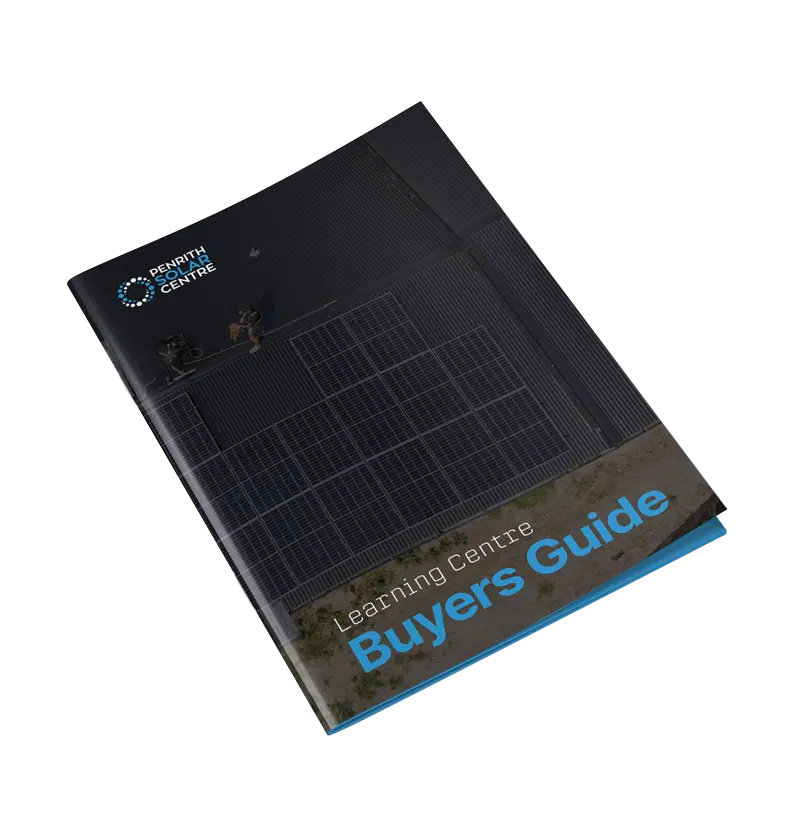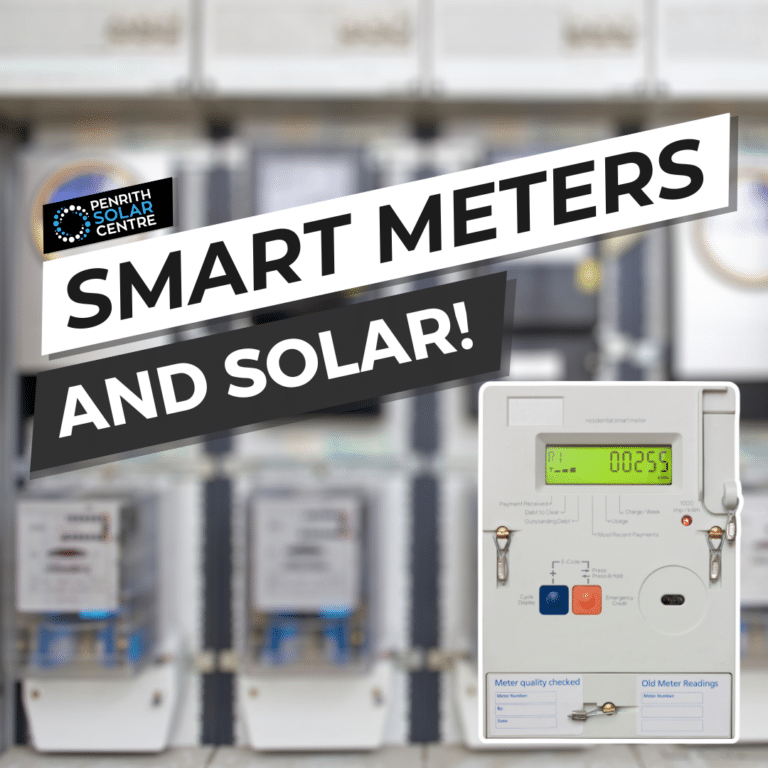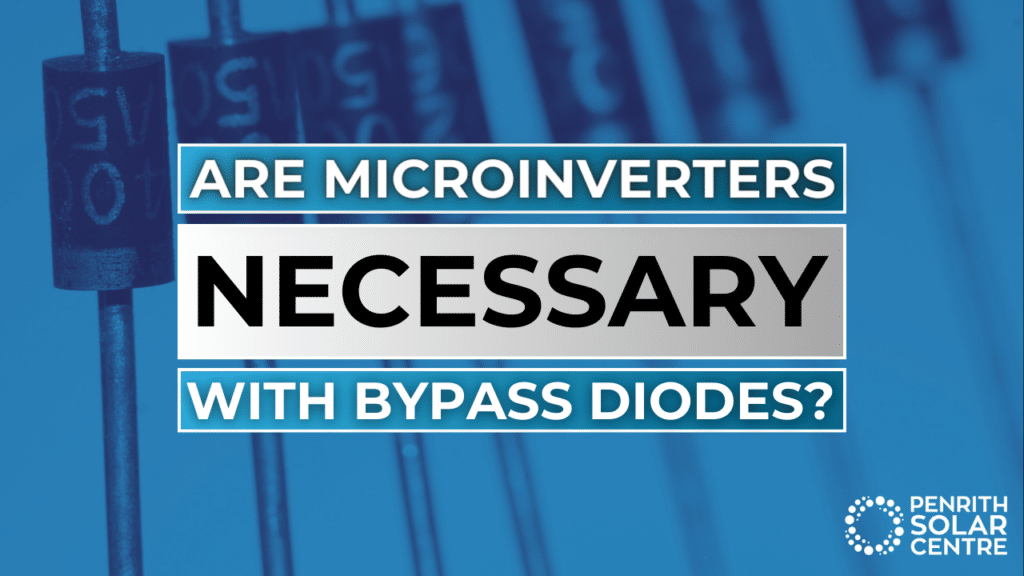
Have you ever found yourself engaged by a wonderful piece of content about microinverters only to read the comments and see someone say that they’re not necessary if you have bypass diodes on your solar panels?
At Penrith Solar Centre, we understand the complexities of solar energy systems and aim to provide clarity on topics like this one. With years of experience in the solar industry, our team of electricians possess an in-depth understanding and hands-on experience with solar technologies, including microinverters, solar panels, and bypass diodes.
We’ve helped countless customers figure out their unique energy needs and goals.
In this article, you will learn the following:
- How Does Shade Affect Your Solar Panels?
- What is a Bypass Diode on a Solar Panel?
- Do Bypass Diodes Ever Fail?
- How Are Bypass Diodes Different from Microinverters?
Let’s dive in!
How Does Shade Affect Your Solar Panels?
Shade blocks solar panels from sunshine. This problem exists on a spectrum between soft and hard shading.
Soft shading happens when faraway objects, like clouds, partially block sunlight from your solar panels. The shadow has no real discernible edge to it.
When it’s cloudy, some sunlight still reaches your panels, allowing for a bit of power generation. Not much though. They still block sunlight and affect the performance of your solar panels.
Hard shading occurs when solid objects near the panel block sunlight. Examples include chimneys, debris, telephone wires, and trees.
Power loss in a solar panel is proportional to how much sunlight is blocking it. Solar panels can’t produce power if sun is no longer shining on them.
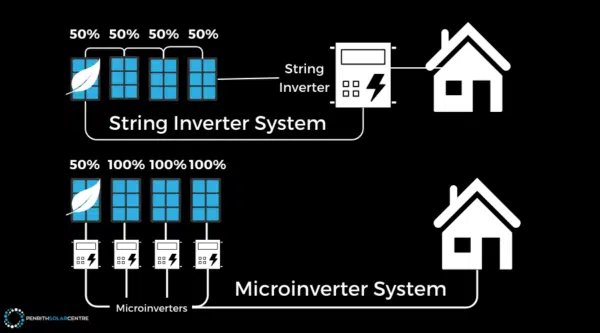
Shading makes a huge difference in how a solar system works. It’s a big problem for a system with a string inverter where a drop in output from one solar panel will affect the rest of that “string.”
If you clicked on this article, you probably already know what a microinverter is, how it works, and how it’s unbothered by shade.
If you’re interested in learning a bit more about the relationship between shade and solar panels, you might want to check out the following article titled, Myths & Misconceptions About Solar Microinverters.
What is a Bypass Diode on a Solar Panel?
Bypass diodes are components in solar panels. The bypass diode has one job: to stop hotspots. Solar panels don’t like hotspots.
Solar panels are made up of cells. Each cell outputs 0.5 – 0.6 volts. Think of individual solar cells as LEDs in reverse (light emitting diodes). Your TV screen is made up of thousands of LEDs.
With an LED you run current through it, and it produces light.
Solar cells are the opposite: you shine a light on them, and they produce current.
Electricity is lazy and will always follow the path of least resistance the way water does. When one solar cell is shaded, shorts out, or becomes inactive for whatever reason, it stops outputting volts. The current is no longer working the way it’s supposed to.
There are at least 60 solar cells in a solar panel (66 is quite common now, but to keep the math easy, we’ll just stick with 60) (or 120 half-cut solar cells). There aren’t enough bypass diodes for each solar cell. Typically, you’ll get three bypass diodes per panel, each responsible for a third of the cells.
A third of 60 solar cells is 20 solar cells. These 20 solar cells are connected on a substring with current flowing through it in one direction with a bypass diode at the end of the current’s pathway.
These substrings within the panel look like this:
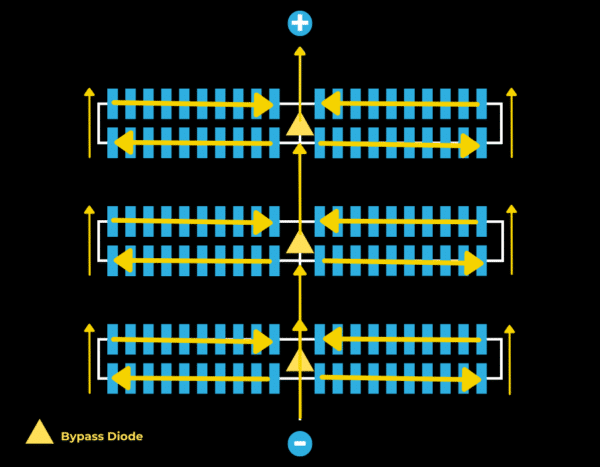
Shaded cells can’t make as much power as unshaded cells because there’s a shadow between the cell and the sun. Makes sense, right?
Pushing current through a shaded cell makes the voltage become negative. The cell uses power instead of making it. Why is that?
A solar cell goes into “reverse bias voltage,” where the flow stops and the cell turns current from other cells into heat, creating a hotspot. Hotspots can lead to burnouts, faster degradation, and cell/glass cracking.
The bypass diode will send the current around the affected substring (one-third of the panel) so the cells that stopped outputting power don’t drain the life out of the others.
The current bypasses the affected area on the panel.
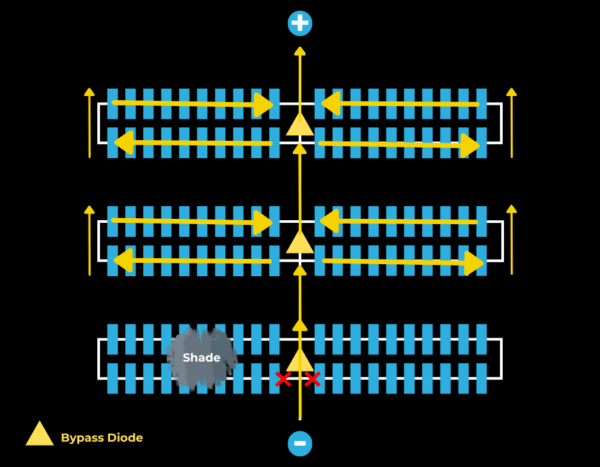
Many think that bypass diodes are also intended to reduce power loss in shaded solar installations the way microinverters do.
This is not true. Panels have bypass diodes to prevent hotspots They are not designed or intended to maximise the efficiency of your solar panels.
Bypass diodes can’t do anything other than bypass underperforming substrings. Panels in a string inverter system will all be affected by the underperforming panel.
We love the following graphic and draw it like a gun every chance we get. It’s that necessary. Here it is again:

If you’re interested in learning a bit more about the risks associated with string inverter solar systems, which utilise bypass diodes pretty heavily, you might want to check out the following article titled, String Inverters: Are They Worth It?
Do Bypass Diodes Ever Fail?
Like any electronic parts, diodes can fail if they’re pushed too hard.
When a bypass diode kicks in, some of the energy going through it turns into heat. If shading happens repeatedly, the diode might eventually give out because of the workload.
But shading isn’t always to blame. If the bypass diode’s voltage rating is exceeded, like if there’s a voltage surge, the bypass diodes will likely fail.
Moisture ingress in the panel can also cause your diodes to short out.
You might also get unlucky with a bad batch from the manufacturer, but a warranty fulfilled by your local in-house solar installer should take care of that problem.
Failed diodes are easy to spot using a thermal imaging camera (because we all have one of those) (By the way, you can totally hire someone who has a thermal imaging camera to check for hot spots on your panels).
Of course, if you have Enphase microinverters with panel-level monitoring, a blown bypass diode is easy to spot. The Enphase Enlighten App that you use for consumption monitoring and performance data will alert you when the panel performance drops by 33%. It doesn’t take much to figure out it’s a blown bypass diode.
Your solar installer will lodge a warranty claim and have that panel replaced.
If you have a string inverter, it’s nearly impossible to tell that you have a blown bypass diode, and your panel would continue operating at around 66% efficiency. The whole array would then drop to the lowest performing panel, which means the entire string is operating at 66% efficiency.
The panels still have bypass diodes in them. They didn’t prevent the other panels in the string from dropping the way they always do in a string system when it’s shaded.
If you’re keen to learn a bit more about failures in solar systems, you might want to check out the following article titled, Solar Safety: Microinverters vs. String Inverters.
How Are Bypass Diodes Different from Microinverters?
Solar panels need something a little more sophisticated than a bypass diode to maximise efficiency.
A good string inverter with Maximum Power Point Tracking (MPPT) software will use it to scan the entire string of panels and select the optimal voltage and current. But please remember that a string inverter can only do so much here and is limited by its technology.
A microinverter (or string system with DC optimisers attached to each panel) will scan each individual panel, because that’s what they’re designed to do, and produce the optimal voltage/current combination.
Bypass diodes are not a replacement for panel-level optimisation with microinverters or DC optimisers.
When you can manage panels individually with MPPT, you get better performance in shaded conditions.
Microinverter solar systems allow adjustments to voltage and current on shaded panels, so the other panels can operate normally. Adjusting the voltage and current of shaded panels improves output and prevents the activation of bypass diodes.
Shade ceases to be a problem thanks to microinverters that will not drag down the performance of your entire solar system.
If you’re interested in learning a bit more about how string systems, string systems with DC optimisers, and microinverter solar systems are different from each other, you might want to check out the following article titled, String Inverters vs Microinverters vs DC Optimisers: How Are They Different?
Cross My Heart and Hope to Diode
Now you know what bypass diodes are, and how they behave. They are a component that is relied upon in string solar systems to prevent the panels from getting hotspots. And unfortunately, they are limited by the same limitations of a string solar system.
If you want to maximise your solar production, you should consider investing in a system that has panel-level optimisation like a microinverter solar system or a string system with DC optimisers.
At Penrith Solar Centre, we’re focused on educating solar enthusiasts in this booming market. We’re educators first and feel it’s important to empower our customers with information.
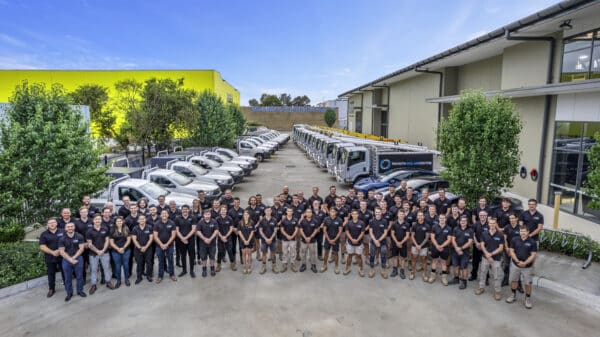
In that spirit, if you’re interested in reading up about the differences between the often-mentioned microinverters and DC optimisers, you might want to check out the following article titled, Microinverters vs. DC Optimisers: Which Is Better?
